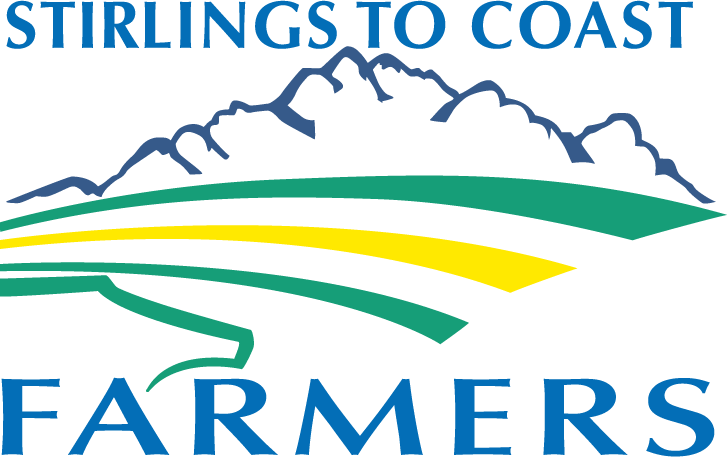Early sown winter wheat paddock scale demonstration trial in the Albany Port Zone
This GRDC-invested project aims to provide wheat growers in the Great Southern Region of WA with a winter wheat varietal decision-making tool that provides them with independent and credible yield, disease and grain quality information to make the most profitable variety decisions and generally promote the production benefits of winter wheats compared to a spring wheat.
Project Background
Winter wheats have slowly been growing in popularity with local growers in the Great Southern Region. Initially they have been adopted in grain and graze enterprises with an emphasis on maximising the grazing opportunity, or by the more ‘innovative’ growers in the region who have looked at utilising agronomy from the eastern states to close the yield gap. However, these wheats are now more mainstream amongst both mixed enterprise and crop-only farming businesses.
In recent years, growers in the Albany Port Zone (APZ) have had outstanding results from both DS Bennett and RGT Accroc and are keen to understand what other varieties of a similar calibre are available and up-and-coming. As an example of the success, the RGT Accroc and DS Bennett yielded an average of 7.7t/ha across the entrants in the hyper yielding awards paddocks (GRDC investment) in 2022. In comparison, the spring wheats yielded an average of 6.2t/ha.
GRDC Investment Outcome:
By 2024, growers will have access to locally relevant yield data and impact of disease management for winter wheat to be able to take advantage of early sowing opportunities with the best ROI in the future.
METHOD
The farm-scale trial was located west of Kendenup, Western Australia. It was planned that six winter wheat varieties be sown, however, due to a seeding error, the numbered Intergrain line ‘IGW6755’ was not sown and instead a later timed ‘Mowhawk’ treatment was sown. The trial was sown on the 4 April 2023 into adequate soil moisture at a seeding rate of 70kg/ha. The later sown Mowhawk treatment was seeded on the 16 May 2023 also at 70kg/ha. This treatment was used as a control (spring equivalent) in the trial, in addition to a nearby paddock of Kinsei. The varieties sown were:
RGT Accroc
DS Bennett
Illabo
RGT Cesario
Mowhawk
Mowhawk (later sown)
Three seeder width strips (total 36m) of 400 metres in length of each variety were sown. Baseline soil sampling, plant establishment counts, flowering dates, plant tissue testing, NDVI, disease scores, harvest yield and grain quality were all assessments completed for the project.
Results & Discussion
The 2023 year was challenging for winter wheat. The trial site was subject to a very dry May after April rain got the crop up and out of the ground. This was followed by an extremely wet June, and a very hot and dry October. The longer season varieties suffered from the abnormally dry October in 2023, and this likely capped their yield potential, keeping in mind, winter wheat yields in the region in 2022 and 2021 were outstanding. On a positive note, each of the ‘true’ winter wheats in the trial still obtained very decent yields given the challenging growing conditions.
Flowering Dates
Flowering dates for each variety varied greatly in the 2023 trial. Of note, the quick winter wheats, Illabo and Mowhawk, reached flowering around a month earlier than the true winter wheats. Between the three true winter varieties there was a spread of 14 days in flowering time with RGT Accroc flowering first on the 3 October, DS Bennett flowering on the 9 October and RGT Cesario flowering on the 17 October. The variation in flowering time was likely driven by a combination of both vernalisation requirement followed by photo period requirement (different for each variety and under varying seasonal conditions). As discussed further below, it is interesting that the variation in flowering time between the true winter wheats did not result in much yield variation.
Disease
Disease was not an issue across the trial site, and this was reflected generally throughout the region in wheat crops. The lack of disease was likely driven by the environmental conditions (very wet to very dry) in 2023, and possibly also due to the reduced hectares sown to wheat in the region each year (in comparison to barley) and the multitude of wheat varieties grown in the region (as opposed to the limited barley varieties grown).
As a result of the late of disease present, the trial was unable to effectively show growers how the different wheat cultivars trialled in this project handled disease.
Grain Yield & Protein
The challenging growing season likely had a significant impact on yield production on the RGT Accroc, DS Bennet, and RGT Cesario, all of which flowered in October. However, average yields of close to 4 t/ha (range 3.72 - 3.85 t/ha) were still achieved for each of these varieties.
The Illabo yielded very well given the tough season (average 5.06 t/ha), however the sowing date for this variety would have likely been too early under normal conditions i.e., where the risk of waterlogging and frost stress during flowering would be increased, resulting in impacts to yield.
Grain protein was marginally higher in the Mowhawk treatments (early and late) compared to the other varieties.
Conclusions
The trial demonstrated a level of adaptability of these true winter wheats, given yields were still reasonable in a season that should have been extremely challenging (to these types). It should give local farmers some level of confidence that in a good year with a soft finish, true winter wheats can provide outstanding yields and in a tough finish, can still yield relatively well.
RESOURCES
ACKNOWLEDGEMENT
Stirlings to Coast Farmers would like to thank the GRDC for investing in this project.


